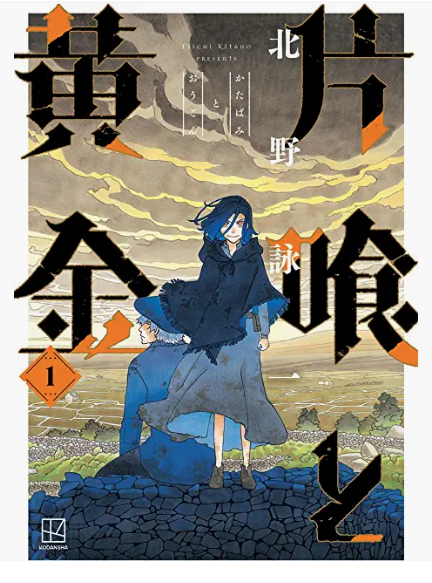91. The "Split Wood (Right Half)" Radical: 片
The four-stroke 片 radical (which has no variants) is identical to this kanji:
片 (969: piece; one of two)
The character's Joyo readings かた and ヘン play a role in these radical names:
かた
へん
かたへん
In the last one, the へん is not the Joyo yomi of 片 but rather corresponds to 偏 (へん: left-side radical), applying in situations such as this one:
版 (770: publishing, printing; edition; printing plate)
Henshall (whose newer edition is the source of all etymological information in this Radical Note) says that the 片 in 版 means "strip," referring to "thin pieces of wood." The 反 (oppose) phonetically contributes the sense "flat, thin," yielding "flat/thin board" as the overall meaning. Henshall asserts that 版 initially "denoted wooden strips/tablets as writing material, paper being very expensive."
We've now encountered the two Joyo kanji in which the 片 radical is on duty.

I like this rendering of 片 and all the other characters here; the slight color variations somehow make for an interesting visual. This manga title is as follows:
「片喰と黄金」
Creeping Woodsorrel and the Gold
片喰 (かたばみ: creeping
woodsorrel); 黄金 (こがね: gold)
The first word represents the name of a yellow flower. But that's probably not why all the characters on the cover have gold highlights; the story is about the Gold Rush in California.
Amazon calls this the "Kindle版," where -版 (voiced here as -ばん) means "edition."
Splitting Wood
Our radical may also have the name みぎかた, which requires some explanation. Here's the ancient form of 木 (tree, wood):

© Richard Sears
LST seal–script version.
Splitting this tree character in half vertically yields pieces now represented by 爿 and 片. These radicals go by unwieldy names in English:
爿: radical 90: "split wood (left half)"
片: radical 91: "split wood (right half)"
Henshall says, "The split is probably conceptual, since to achieve this with ancient tools would have been extremely difficult."
Nelson supplies the radical name みぎかた for 片, which makes sense, as みぎ means "right." But my proofreader can't find evidence that this name exists.
I must say that associating 片 with the right side makes me expect to see it on that side of a kanji, when in fact our radical occupies the left side of 版. Knowing the origin of the radical name helps to make sense of this situation.
